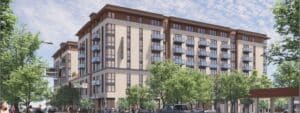Once known as the Valley of Heart’s Delight for its abundance of orchards, the Santa Clara Valley was the largest fruit-producing region in the world up until the 1960s. That agricultural heritage is largely gone from most of the region with the exception of South Santa Clara County. Morgan Hill in particular has a rich history that lives on in places like Andy’s Orchard and the CSA, Timptations.
However, the last few decades have seen a steady decline in working farms due to poor land-use planning. From 1984 to 2010, Morgan Hill lost over 3,700 acres of farmland to low-density development. And with the City’s recent plans to develop hundreds of acres of greenbelt farms in the area known as the Southeast Quadrant, the future of agriculture in Morgan Hill is under threat. Watch our animation below on what could happen to the city’s remaining agricultural lands.
Our main concern with the City’s Southeast Quadrant proposal is that the preservation of farmland is presented as an afterthought. Boundary lines, policies, and funding mechanisms can all be made stronger. Regional examples can serve as models for what Morgan Hill can become. See our alternative vision for the Southeast Quadrant.
Some farmers and city leaders are skeptical that the remaining farmland can be viable. Greenbelt Alliance is more hopeful. We believe that with some creative thinking, collaboration, and compromise, Morgan Hill’s working farms can thrive. The city’s own consultants found that small-scale agriculture can succeed in Morgan Hill. Read their findings here [PDF].
Last month, the City invited a panel of experts from the Brentwood Agricultural Land Trust, Sustainable Agriculture Education, and the Green Valley Agricultural Conservancy to the General Plan Advisory Committee meeting to talk about regional efforts to promote urban-edge agriculture. In these cases, it was clear that the preservation of farmland was held up as an attainable goal.
It has been over ten years since the debate over the Southeast Quadrant began and all sides want a resolution. Morgan Hill’s elected leaders need to work with farmers, land trusts, businesses, and environmentalists to craft a vision for the city that creates a vibrant community with homes, jobs, recreation, and a thriving agriculture economy. Doing so will point to blue skies and a verdant valley ahead.




